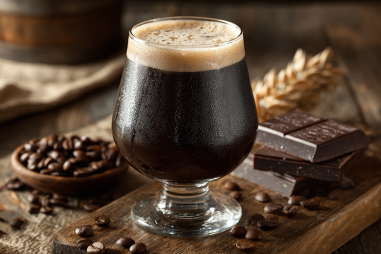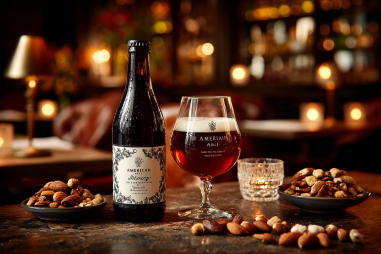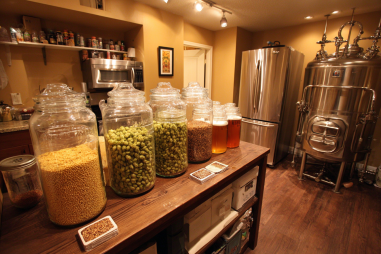Brettanomyces, often affectionately called “Brett,” is a wild yeast strain that has revolutionized the craft beer world by adding layers of complexity and character to beer. Unlike conventional Saccharomyces yeast, Brett produces funky, earthy, and sometimes fruity flavors that many beer enthusiasts crave. However, mastering the art of Brett beer fermentation requires a nuanced understanding of its unique behaviors and the techniques that can be employed to harness its potential. In this article, we’ll explore innovative fermentation techniques every brewer should know to craft exceptional Brett beers.
Understanding Fermentation in Brett Beer
Fermentation is the magical process that transforms wort into beer, and when Brettanomyces is involved, this process takes on a fascinating twist. Brett yeast strains metabolize sugars differently than traditional brewer’s yeast, often working slower but continuing to ferment long after primary fermentation ends. This extended activity contributes vibrant complexity, producing flavors like barnyard funk, tropical fruitiness, and wine-like tartness that define Brett beers.
Recognizing how Brett interacts with the fermentable sugars and its environment is key to controlling the final beer character. This understanding allows brewers to tailor techniques that bring out the best in their Brett fermentations.
Differences Between Brett and Traditional Yeast Fermentation
While Saccharomyces cerevisiae is known for its predictable and relatively rapid fermentation, Brettanomyces stands out by fermenting more slowly and at times unpredictably. Traditional yeast typically converts simple sugars in days to weeks, producing familiar beer flavors. Brett, on the other hand, can metabolize complex sugars like dextrins that Saccharomyces cannot, often leading to a more thorough attenuation and drier finishes.
Additionally, Brett can produce a wide array of distinctive compounds such as phenols (which can smell like leather or clove), esters (fruity aromas), and volatile acids (which contribute to sourness). These compounds are part of what give Brett beers their characteristic funkiness but can also be challenging to control without the right techniques.
Primary vs. Secondary Fermentation with Brett
Deciding when to introduce Brett yeast is a crucial step. Some brewers use Brett as the sole fermenting yeast in the primary fermentation; others pitch it in secondary fermentation after Saccharomyces has completed its primary work.
- Primary Fermentation with Brett: Using Brett from the start allows it to ferment both simple and complex sugars from the beginning. This can lead to a longer primary fermentation period, sometimes lasting several weeks to months, but results in a fully attenuated beer with complex flavor development.
- Secondary Fermentation with Brett: In this approach, Saccharomyces handles the bulk sugar fermentation first, and Brett is introduced later to modify flavors, perform additional attenuation, and add funk and complexity. This method can provide more predictable primary fermentation and allows for greater control over Brett’s flavor impact.
Some brewers blend these techniques, tailoring the timing depending on the beer style and desired characteristics.
Temperature Control and Its Effects
Temperature is one of the most significant variables influencing Brett fermentation. Unlike Saccharomyces, which performs optimally between 65-75°F (18-24°C), Brettanomyces can ferment effectively across a broader temperature range, typically from 68°F to as high as 85°F (20-29°C) or more.
Higher temperatures accelerate Brett’s metabolism, intensifying its funk and ester production but can sometimes produce off-flavors if not monitored closely. Cooler temperatures promote a slower, cleaner fermentation resulting in subtler Brett characteristics that can be more balanced.
Many brewers experiment with temperature ramps — starting at lower temperatures during the early phase to allow steady attenuation, then gradually increasing the temperature to amplify Brett’s aromatic contributions. Controlling fermentation temperature with precision thermostats or fermentation chambers is essential to harnessing Brett’s potential.
Using Mixed-Culture Fermentations
Mixed-culture fermentation involves combining Brett with other yeast strains and bacteria to create complex, layered beers. This technique is a hallmark of traditional Belgian lambics and modern sour ales where Brettanomyces works alongside Lactobacillus, Pediococcus, and Saccharomyces.
Brewers use mixed cultures to develop sourness, funk, and other nuanced flavors that are impossible to achieve with a single organism. Introducing different microbes at various fermentation stages allows for controlled interaction and flavor evolution.
Some practical tips for mixed cultures include:
- Choosing yeast and bacteria with complementary metabolic profiles.
- Staggering inoculations to avoid competition and promote balanced fermentation.
- Monitoring pH and gravity regularly to guide fermentation progress and microbial health.
Mastering mixed-culture fermentations requires patience and experimentation but can result in some of the most exciting Brett-forward beers on the market.
Barrel Aging and Oxygen Exposure
Barrel aging is a traditional technique to further enhance Brett beers by adding oak character and controlled oxygen exposure. The porous nature of wooden barrels allows small amounts of oxygen ingress, which can stimulate Brett into continued fermentation and flavor development.
This micro-oxygenation encourages the production of esters and phenols, contributing to the complexity of the beer’s profile over months or even years. Barrel aging also allows Brett to interact with residual microbes in the wood, adding additional layers of funk and sourness.
However, oxygen management is critical. Excessive oxygen can lead to undesirable oxidation flavors, while too little may inhibit Brett’s full potential. Regular monitoring and careful sampling are required to balance these factors, alongside maintaining barrel sanitation to avoid contamination.
Managing Fermentation Time for Desired Flavors
Brettanomyces fermentation is a marathon, not a sprint. The duration of fermentation significantly impacts the final beer character. Short fermentations result in milder Brett character, while extended aging evokes deeper funk, dryness, and complexity.
Brewers need to be comfortable with patience, often allowing Brett beers to mature for months or even years. During this time, subtle flavor shifts occur as Brett consumes remaining sugars and produces unique metabolites.
To manage fermentation time effectively:
- Monitor gravity readings regularly to track attenuation.
- Taste periodically to evaluate flavor development and determine the desired endpoint.
- Plan for adequate tank or barrel space to accommodate longer aging.
Setting production timelines accordingly ensures that Brett beers reach their full potential before packaging.
Troubleshooting Common Fermentation Issues
Due to its unpredictable nature, working with Brettanomyces can lead to some common challenges. Understanding these issues and how to address them keeps your fermentation on track:
- Slow or stalled fermentation: Brett ferments slowly by nature. However, if gravity remains stuck for an extended period, check temperature, nutrient availability, and yeast health. Gentle warming or nutrient additions can help reactivate fermentation.
- Off-flavors: While Brett is known for funk, overly harsh phenolics or vinegar-like aromas may indicate contamination or excessive oxygen. Ensuring cleanliness and oxygen control during fermentation helps avoid this.
- Excessive carbonation or over-attenuation: Brett’s long fermentation can cause unexpected continued attenuation in the bottle, leading to over-carbonation. Use proper bottling techniques and consider pasteurization if necessary.
- Muddiness or haze: Brett can produce proteins and polysaccharides leading to haziness. Some brewers embrace this as part of the style, but filtration or fining agents can clarify if desired.
Practical Tips for Effective Brett Fermentation
To wrap up, here are some actionable tips for brewers eager to work with Brettanomyces:
- Patience is paramount. Give Brett time to develop its full character and stay flexible with timelines.
- Control your environment. Use proper temperature regulation tools and manage oxygen exposure carefully.
- Keep detailed records. Track fermentation parameters and flavor outcomes for continuous improvement.
- Be prepared for variability. Brett fermentation is as much art as science; embrace experimentation.
- Sanitation is still king. Protect your beer from unwanted microbial contamination by rigorous cleaning and sanitation protocols.
By understanding and applying these fermentation techniques, brewers can unlock the intriguing flavors and complexity that only Brettanomyces can provide, crafting beers that stand out in today’s dynamic craft beer landscape.







